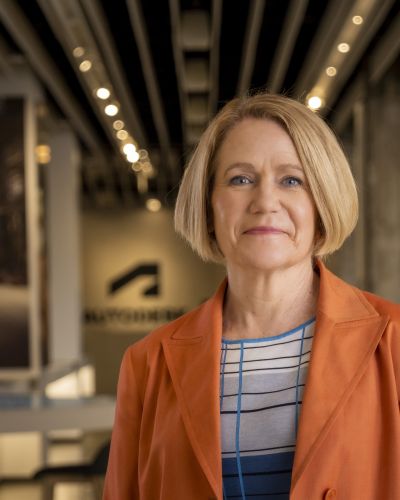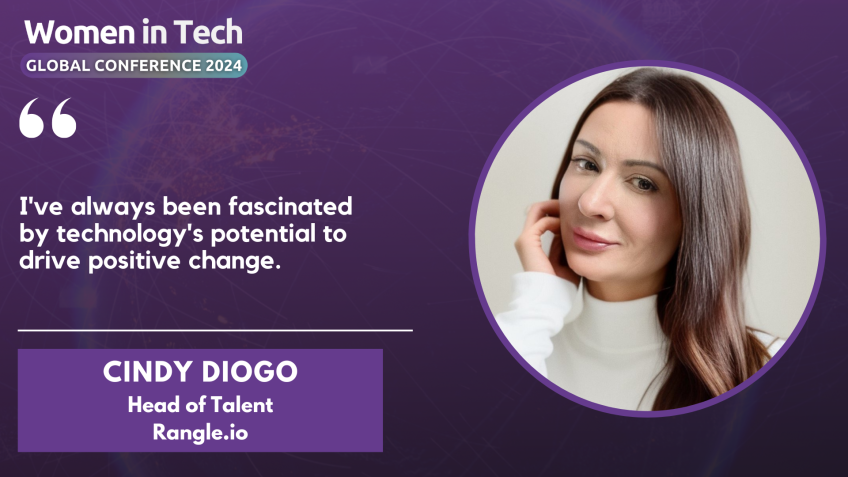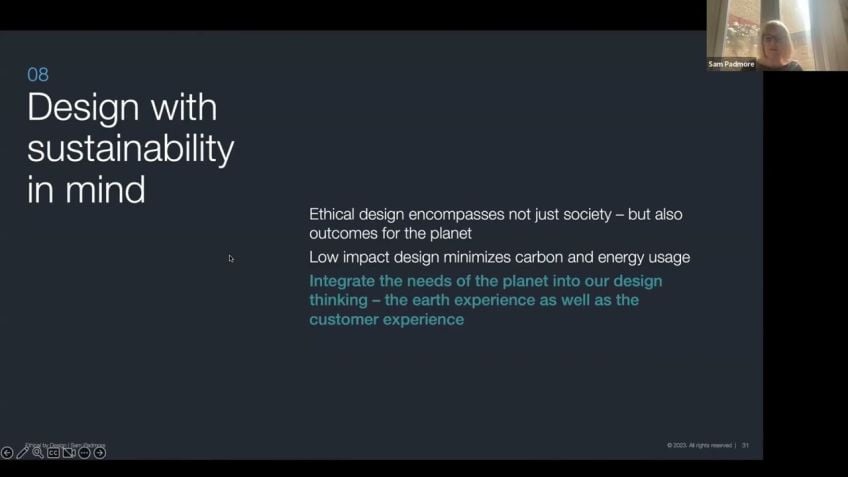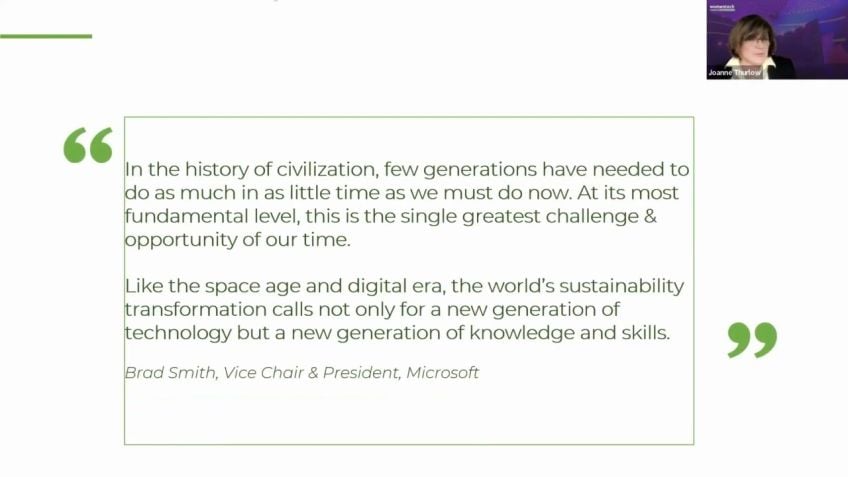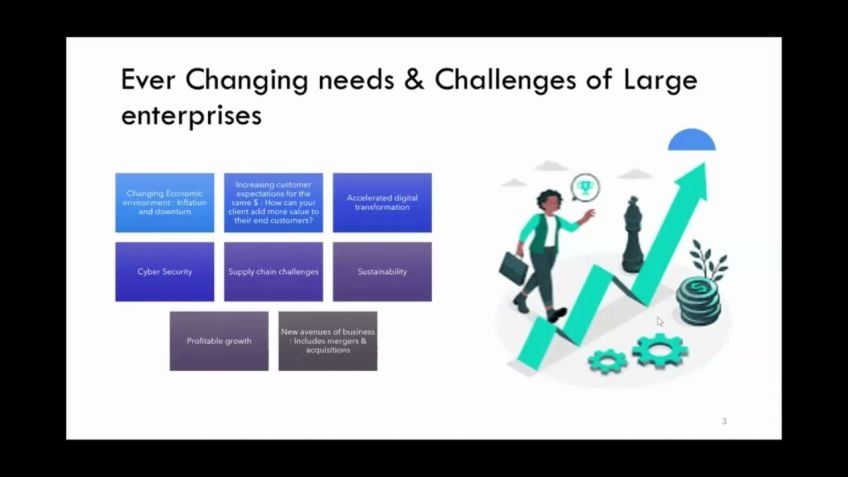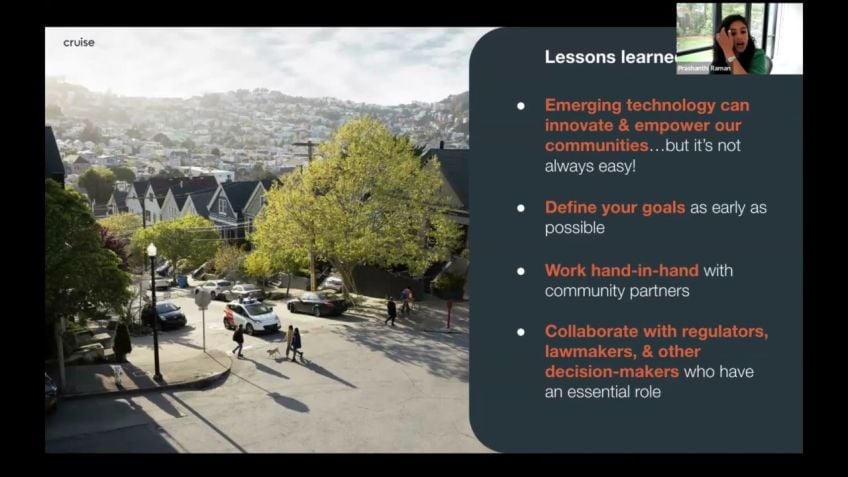Maximize your impact: Opportunities for entrepreneurs to turn sustainable solutions into business offerings
Amy Bunszel
Executive Vice President, Architecture, Engineering and Construction Design SolutionsFinding the Silver Lining: Sustainability Opportunities amid Global Challenges with Amy Bonzel of Autodesk
Good day, readers! Today, I bring you a refreshing perspective on sustainability from Amy Bonzel, the Executive Vice President at Autodesk for our architecture, engineering, and construction design solutions products, like the Auto Cadret, Civil 3D, and the new former AEC cloud. She is convinced that embracing futuristic solutions to these sustainability challenges can significantly contribute to a healthier planet.
The Big Picture: Recognizing the Problems
There is no denying that climate change has become a massive global problem. From destructive fires and droughts in the US to frequent storms, heat waves, and sea-level rise, climate change impacts are myriad. To top that, global populations are expected to surge by two to three billion people in the next 30 years, further exacerbating these environmental issues.
However, Amy believes that these challenges present tremendous opportunities to innovate and create solutions for a more sustainable future. In this piece, Amy shares insights, real-time examples, and glimpses of the future in three critical areas: carbon, water, and waste.
Combatting Carbon Emissions: The Now and the Future
Did you know that 40% of global emissions come from buildings and 19% from manufacturing? Companies are already making advancements in carbon reduction methods. Heirloom Carbon, for instance, uses natural minerals and a closed-loop system to remove carbon from the air. Similarly, BamCo manufactures bamboo-based structural building components that speed up construction and reduce a building's carbon footprint.
Looking into the future, we have companies like Prometheus Materials aiming to replace cement with carbon-negative bio-cement, potentially mitigating billions of CO2 emissions. Also, using generative design, Airbus has developed a lighter, bionic partition for its A320, contributing to significant fuel savings and lesser CO2 emissions.
Water: The Resource of the Future
The figures are staggering. Seventy-three million people globally live in areas with high to critical levels of water stress. Eight trillion gallons of usable water is lost each year due to aging infrastructure and lack of digitalization.
Companies are stepping up their efforts to manage this precious resource, utilizing digital tools for improved efficiency. In response to a pathogenic threat, Bristol Water used hydraulic modeling software to quickly restore water quality. Splash International works incessantly to design child-focused water sanitation and hygiene solutions for some of the world's most populous cities.
Considering the future, an aging water system that serves over 9 million people based in London and the Thames Valley, known as Thames Water, is using a dynamic digital twin and AI to resolve issues before they happen.
Waste: Bane or Boon?
With one third of waste in the developed world coming from construction and 10% from manufacturing in Europe, we need to find better ways of managing waste. Innovations for a sustainable future are already in process. YA Labs recycles sunglasses while Pallet produces rapid response shelter villages from prefabricated, saved material.
- Factory OS, a California-based startup, leverages manufacturing processes to create affordable and quick-to-build housing.
- Wonder Alpine applies generative design to create skis from fast-maturing, renewable microalgae due to its lighter and stronger properties.
A long-term target for innovation, as Amy predicts, is focusing on creating less waste and increasing reuse. Companies like Philips are leading the way with designs meant for easy repair and reuse while Decathlon is pioneering the 3D printing of bicycles from aluminum to produce more sustainable products.
The Call to Innovation
By harnessing creativity and innovation with a sustainability perspective, immense improvements can be made to the health of our planet. While the challenges remain formidable, the strides in sustainability projects, companies, and products provide a reason to be optimistic about a sustainable future.
For more insightful discussions, feel free to connect with Amy Bonzel through her LinkedIn. She is always happy to engage with individuals passionate about environmental sustainability.
Video Transcription
Ok, so hello everyone. I'm excited to be here to get you thinking differently about sustainability. I'm Amy Bonzel, executive Vice President at Autodesk for our architecture, engineering and construction design solutions products.You may know a few of them, Auto Cabret, civil 3d and our new former A EC cloud. My goal today is to convince you that you can have an even bigger impact on the world as entrepreneurs and innovators in small medium or large companies and as all around great people. If you apply your talents to solving the problems facing our planet, why am I so passionate about this? Well, Autodesk makes software for manufacturing and product design, architecture, engineering and construction, as well as media entertainment. We help our customers make anything and the best way to give you a quick overview of is this fun video showcasing the work of our customers and it doesn't want to play. I'll try one more time. So you may have recognized a few products, buildings and of course, characters in that video. So let's talk about why we're here today.
Climate change is a huge problem and I'm not gonna go into all of the details my assumption is that if you're watching this, you also have concerns about the climate and want to think about solutions in the US. We are experiencing fires and droughts in the west, intensified hurricane activity in the Southeast, flooding in the Midwest and also globally, it just doesn't stop the rapid acceleration of these impacts. Points to an even greater need for innovative solutions. Climate impacts vary by industry.
It's been estimated that we may need to spend $400 billion globally every year during the next decade. Just to adapt our existing infrastructure due to more frequent storms, heat waves and sea level rise and on top of that, it's expected the populations will grow by two or 3 billion people in the next 30 years. I don't know about you, but these numbers are hard to grapple with and there are even more impacts. There are big societal and environmental shifts that continue to remind us that the world requires new ways of working, living, designing and making things. Here's the good news, there are tremendous opportunities to solve some of these sustainability challenges. I'm gonna focus on three of them today. Carbon water and waste for each of the opportunity areas. I'm going to share businesses that are having an impact right now, both large and small start ups and established companies. And what is showing promise in the near term and some ideas for the future carbon has a huge impact on climate. Did you know that 40% of global emissions come from buildings and 19% from manufacturing given the size of their negative impact. These are great target areas for improvement. Here are some examples on how carbon is being reduced right now.
Scientists believe that we need to reduce our emissions while also removing carbon from the air heirloom. Carbon is a start up that is commercializing technology that removes carbon from the air using natural mineral minerals and a closed loop system. They have line of sight to carbon removal at $50 per ton. These are compelling economics and heirloom carbon envisions creating a new trillion dollar carbon removal industry. What about new materials that shrink a building's carbon footprint? Bamco is a building technology company that manufactures bamboo based structural building components. They speed construction and shrink a building's carbon footprint by reducing greenhouse gas emissions. They are showing results with their walls being 60% more thermally efficient. Let's take a look at what is on the horizon.
What if you could capture flared methane and turn it into valuable energy while methane emissions originate from a variety of agricultural and energy sources. One of the largest is the flaring of associated gasses in oil and gas production. M two X Energy Inc is reshaping how methane gas is treated to reduce the climate impact of gas flares. They're using digital solutions to build and scale an integrated system that is capable of addressing 90% of all methane flared from current gas and oil operations. The Ala Dike in is the largest dam in the Netherlands at 32 kilometers. It's needed to be reinforced due to the increasing pressures of climate change. With one third of the Netherlands below sea level, much of the country is at serious risk of flooding and the dam is one of the country's key defenses against the sea. With digital solutions design, co ordination time was reduced by as much as 80% which is critical for such an important public infrastructure project. Digital construction and prefabrication solutions also helped achieve an estimated 56% reduction in carbon emissions compared to other solutions while also creating a habitat for local marine life. Now let's turn our gaze a little further into the future.
Concrete is the second most prevalent material on earth behind water and it accounts for 8% of all global greenhouse gas emissions mostly as a result of the production process. Prometheus materials aims to replace cement with an equally durable but carbon negative bio cement.
Alternative Prometheus's breakthrough has the potential to mitigate approximately 1200 million metric tons of Co2 E also known as carbon dioxide equivalent by 2050 that's equivalent to 20 to 30% of all concrete emissions today. Now, in developing a new concept for the Airbus A 320 the Airbus team used generative design to redesign the partition that separates the passenger compartment from the galley their goals were to make the new design lighter, stronger, thinner and more complex by applying generative design.
The team landed on a bio mimic design inspired by slime molds and mammalian bones. This bionic partition is 45% lighter than the original. The light weighting enables fuel savings. In fact, 100 and 66 metric tons of CO2 emissions would be cut every year. Her plane for an Airbus A 320 that is installed with these bionic partitions, changing gears to water. If you're from California or another area experiencing intense drought, you know the impacts to this resource. Firsthand. Here are some statistics, there are 73 million people living in countries with high and critical levels of water stress and eight trillion gallons of water is lost each year worldwide water that was ready to go to homes and businesses yet it isn't, it is a tragedy to waste such a precious resource and this is largely due to aging infrastructure and lack of digitalization.
Here's the good news, a lot is happening right now in water, digital solutions are critical to maximizing this precious resource. Have you ever gotten a boil water notice? Meaning you need to boil the water coming from your tap before you can use it. This is scary. Bristol water supplies over 1 million people in England with clean fresh drinking water. Recently, a pathogen that can cause diarrhea, nausea and vomiting was discovered in the system and their tanks had to be immediately taken out of service drained and treated. A boil water notice was also put in place as a precautionary measure to restore water quality as quickly as possible. Engineers used hydraulic modeling software to quickly identify modifications to the system, enabling the soft system to be purged within 24 hours and service restored as quickly as possible.
At the other end of the planet, splash international designs. Chil child focussed water sanitation and hygiene solutions called wash for some of the world's biggest cities like Kolkata and Addis Ababa. By using modern design and manufacturing solutions. Splash has designed and manufactured over 2100 hand washing and drinking stations for schools and orphanages. What's on the horizon for water, more technology helping our aging infrastructure for those of you from the United States. You may have heard about the toxic green algae bloom in the summer of 2014 that left the citizens of Toledo Ohio without drinkable water for days. In the wake of this emergency, the city turned to arcadis to remove, to renovate and expand the 80 year old facility using digital tools and cloud lips, using digital tools and cloud collaboration capabilities. Sorry, my slides are moving on. OK. Using digital tools and cloud collaboration capabilities.
Arcadis saved 1000 design hours and was able to deliver more resilient solution to the city and ensure safe water for the future. Now let's talk about digital twins. You can think of a digital twin as a digital version of a physical thing, it could be a factory, a water treatment plant, a building theme park or even an avatar of you. Here's a great example of how Digital Twins are being used to build resiliency into entire water systems. Thames Water manages one of the oldest water systems in Europe and serves over 9 million customers across London and the Thames Valley with artificial intelligence. Thames Water can aggregate a vast array of real time data to a dynamic digital twin. The team is starting to discover how historical telemetry can give them insights into understanding the day to day performance of its assets including how to predict future demand and prevent incidents before they happen. Building resiliency into their water system. A lot is also happening into the future to manage this precious resource. How about a canal that doubles as a catch basin for flooding using a smart control system with remote sensors combined with rainfall forecasts.
This canal can accommodate additional capacity for 55,000 cubic meters of floodwater that's equivalent to 22 Olympic sized swimming pools. So when a storm is forecast, the water levels in the canal are automatically adjusted to prevent flooding in the local community. The efficient design also saves 5000 tons of carbon and freed up 100 and 10 hectares of land for future development. Anglian water in the UK is transforming their aging infrastructure into a 21st century resilient water supplier. Over the past two years, they've brought advanced A I technology to their large largest water production facility and developed real time operational intelligence for process optimization. They use machine learning capability to predict and dynamically respond to disturbances in water quality and it's good for their business.
In their first project, they saved over 100 and £50,000 and they can do this by using fewer chemicals, reducing cost and impact on the environment. Now, let's talk about waste. Did you know that one third of waste in the developed world comes from construction? I predict you will never look at a construction site this same again. And what about manufacturing in Europe alone? 10% of waste comes from manufacturing a few examples about how people are driving change. Now, let's start with ya labs, a Belgian start up creating sustainable sunglasses based on the principle of circularity. The company offers a simple process by which customers can return used glasses which are then recycled and the chemical components are used to make a new pair.
They also source plastic for the frames for bottles and nets found discarded in the ocean. And they're excited to demonstrate that circularity can be easy, affordable and convenient. What about using sustainable practices to shelter unhoused populations around the United States?
Pallet manufactures rapid response shelter villages that provide dignified transitional housing. They leverage prefabrication processes that reduce waste to save time and then train individuals from the criminal justice system using these new transferable manufacturing skills.
In the near future, we will see an even bigger impact from new materials and prefabrication processes. Factory OS is a California based start up that leverages manufacturing processes to create affordable housing. The housing units are assembled in West Oakland, California in only 10 days and then they are brought to the job site and stacked to create a building. These buildings would have taken about a year to complete on site using traditional design and construction methods. Both waste and cost are greatly reduced in their factory setting and safety and speed are also improved. Did you know that you could make skis from micro algae instead of petroleum products? Are you ready to try them on your next ski adventure? Innovative renewable materials enable manufacturers to move away from petroleum products and generative design enabled Wonder Alpine to create optimal designs for these new materials and manufacturing processes that reduced waste by £2 per ski. Additionally, micro algae is a renewable resource maturing in 5 to 7 days compared to millions of years for fossil fuels. Longer term, reducing construction and manufacturing waste and enabling reuse still presents a rich target environment for innovation. You may not have considered that when creating new business models, you could also yield better designs and less waste.
I think it's safe to say we're all familiar with software as a service and I recently learned about lighting as a service signify, a Phillips brand installs operates and maintains commercial lighting systems while customers pay a monthly service fee for light the lighting fixtures that signify uses under the LAAS contract are specifically designed for easy repair and replacement and can be easily reused or recycled instead of thrown away by facilities teams.
And according to Phillips, their circularity based bulbs last 75% longer than traditional ones. We've talked about skis and sunglasses. What about bicycles? There's a definite theme that the consumer products we use today are ripe for sustainable innovation. Decathlon is moving away from carbon fiber, the industry standard for performance bikes because it is very hard to recycle. They are planning to 3d print bicycles from aluminum enabling a lighter, stronger, more customizable and more sustainable bicycle. I want to leave you with one thought by applying your creativity and innovation to the sustainability challenges. You can have an even bigger and more positive impact on the world than you are today while there is still more work to be done to solve sustainability challenges of today.
I am hopeful for the future. Thank you. And if you have any questions, I can address them through the chat. All right. Looks like we don't have any questions at this time. Um I put up here uh my cover page. So if any of you would like to reach out to me over linkedin, I would be more than happy to connect. Thanks and have a great rest of your day.

